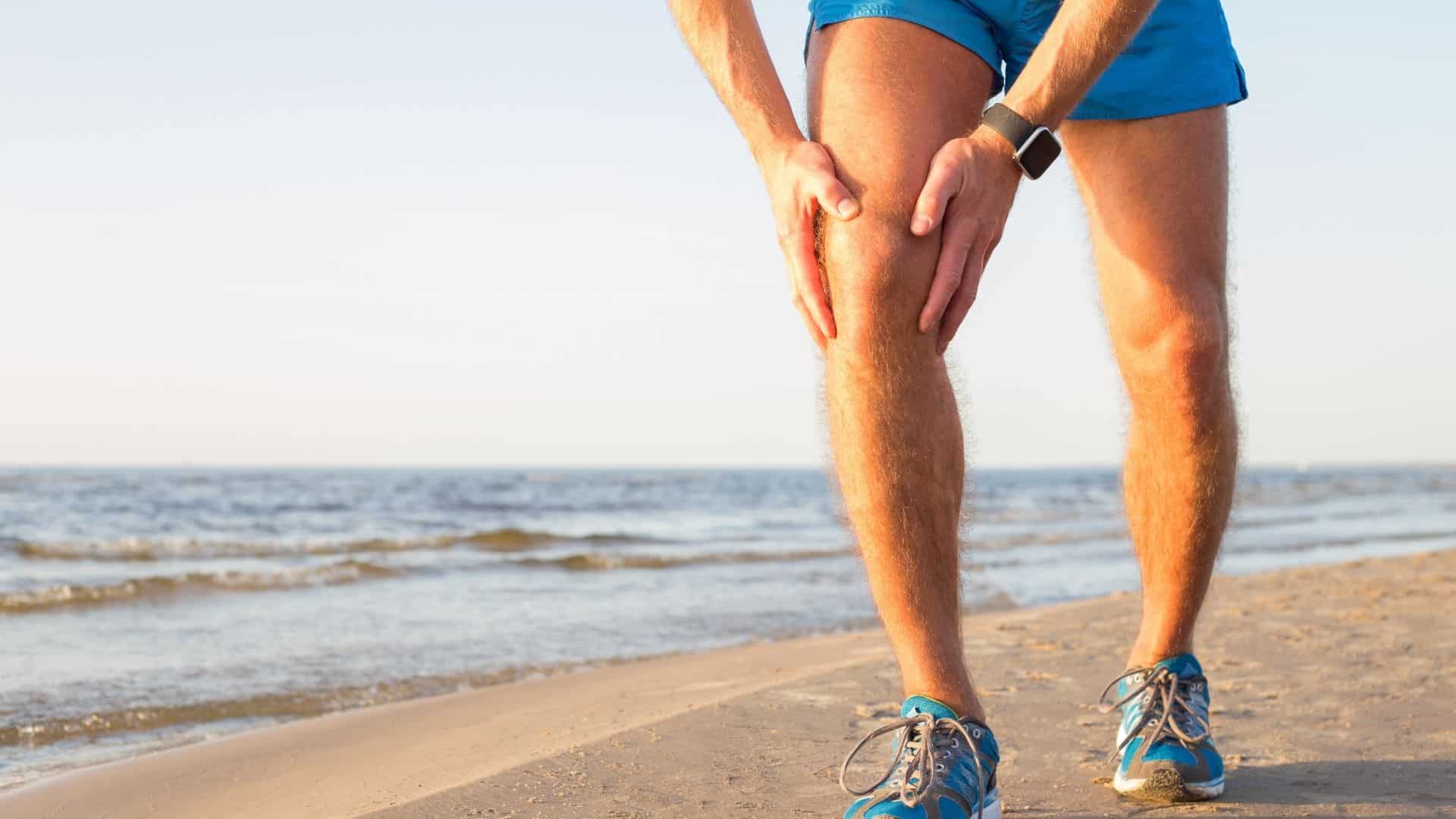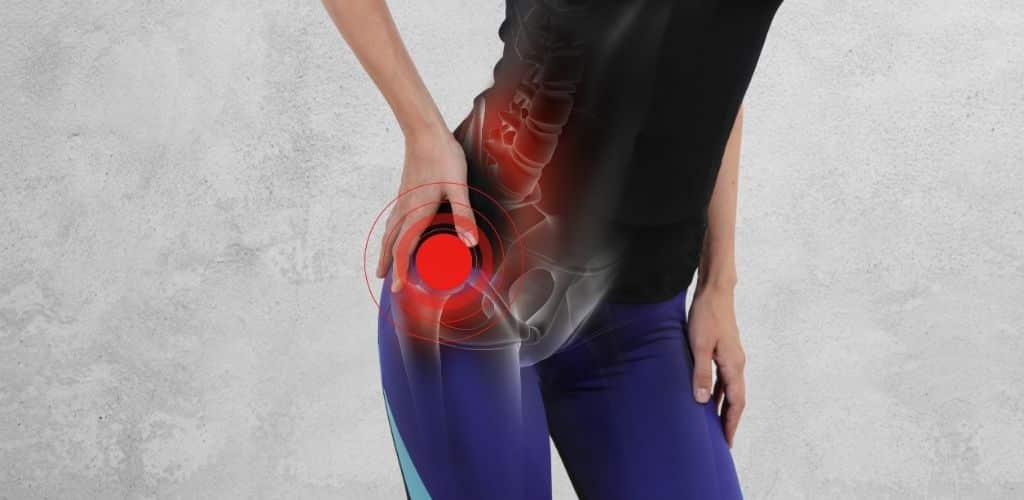
Many beginners know the feeling of joint pain after having started doing sports. Often, the untrained muscle and joint pain tends to discourage people from continuing and leads them to a sudden stop. While some pain is explainable, some may be worrying.
An overload of exercise and stress on joints may cause pain, however, this pain should disappear overnight. It is only when joint or muscle pain persists for longer than 3 days that it can be considered a warning sign from the body. Usually, persisting pain is the result of cartilage tissue inflammation, stabilizing ligaments around the joint or the joint itself.
Many diseases can affect the joints in your body and cause pain. Arthritis is particularly common. It is age-related wear and tear of the joints which leads to inflammation and severe pain. It is caused by insufficient production and supply of collagen to the body. Arthritis can usually be felt after sessions of exercise due to the joints having rubbed against each other intensively in a short period of time. If the pain persists and develops into a chronic inflammation, the joints may become deformed. This deformation can, in times, lead to permanent limitation and restrictions in movements. The inflammation of the joint may also spread to the bones and cause serious consequences. It is recommended to clarify with a physician whether the pain felt is exercises related or if it is Arthritis.
Often, a simple foot misalignment can cause muscle and joint pain. This can be caused by shoes being too loose, socks slipping down or shoe sole being unsuitable for the shape of the foot. The brain will automatically attempt to correct the misalignment by correcting the foot position which tends to result in non-gentle positioning. The unfamiliar position will overstretch the ligaments and put strain on other joints which may lead to muscle pain and irritation of the joints. Over time, joint cartilage may also excessively wear out. The lack of cartilage will cause bones rubbing each other which can only be protected by synovial fluid for a little amount of time. On the stepper, the foot, knee and hip joints are put under severe stress. In just one hour, there is on average 10,000 forward and backward movements. Additionally, weight training machines may also be fatal for joints. A misalignment of the foot or back can cause severe muscle pain and may increase the joint pain.
If your muscles and joints already hurt, you can resort to all kinds of home remedies. We recommend herbal-based pain ointments or aconite pain oil which is a wonderful homeopathic remedy that does not interfere with the body’s hormone levels too much. If your joint continues to hurt, avoid applying too much pressure in order to keep the cartilage elastic which will allow its stimulation and its regeneration. Never rely on ibuprofen or paracetamol on a permanent basis as they tend to hide the true causes of joint pain. Should you experience chronic muscle pain, it is a warning sign that you should not ignore.
In order to avoid future muscle and joint pain, you should warm-up and stretch extensively before doing exercise. It is recommended to start with a light workout which should not exceed a third of the intensity of your full workout. This should prevent the muscle and joint pain felt after exercises. In addition, the metabolism and blood circulation in your musculoskeletal system is stimulated and the elasticity in your muscle is promoted. It is important to pay attention to the techniques and forms of exercises when doing sports. Additionally, it is recommended to get shoes adapted to the type of exercises performed and the type of foot of the athlete. Do not forget that jogging creates a force on your joints that is around three to five times your body weight. It is therefore extremely important to ensure you have the right gear for the exercise.

Our joints, cartilage and synovial fluid consist mainly of collagen. These body parts are made up of more than 40% collagen meaning that a lack of thereof may be the main cause of joint pain. A collagen-rich diet can both prevent joint pain but also repair existing joint damage. For this purpose, it is recommended to consume a quantity of 10 grams of collagen per day. The easiest way to take this protein is in the form of Collamin powder. The 100% pure collagen powder produced in Switzerland can be dosed perfectly and is ideal as a dietary supplement.
Fibers are converted by our intestinal bacteria into metabolites. These metabolites have strengthening and anti-inflammatory effects on bones and joints. Healthy muesli consists mainly of oat flakes, nuts and seeds which all have particularly high levels of dietary fibers. In addition, bananas may be added to this delicious breakfast as they are high in magnesium and calcium. These minerals help promote the strength of bones thus reducing the risk of breakage. Magnesium is also known to relieve muscle pain particularly quickly and helps establish better synapse connections in the muscle fibers. A total daily dose of 30 grams of dietary fiber per day is recommended. It is interesting to remember that in addition to the positive effects on joints and bones, dietary fiber also encourages a healthy digestive system.
Studies have found that arthritis patients have particularly low levels of zinc. Zinc is a mineral which has anti-inflammatory effects and thus relieves pain. Additionally, Zinc catches the free radicals in the blood which prevents further pain. Zinc also plays an essential role in wound healing. This mineral can be found in seafood, Brazilian nuts and lentils.
Omega-3 fatty acids are also indispensable for healthy joins and muscle pain as they also have anti-inflammatory properties.
Although many people do not enjoy eating green vegetables, they have many positive effects on the building and regeneration of cartilage as they are particularly high in calcium. This mineral is extremely important in the reconstruction of cartilage by collagen. Furthermore, green vegetables contain large quantities of folic acid and potassium which protects joints from cell toxins and prevents the wear and tear of the cartilage. You should eat good cherries but not only in summer. This red berry stimulates your body’s own collagen production. However, depending on the person’s age, this stimulation may only result in too small quantities of collagen being produced. Therefore, it is recommended to supply the body with a ration of collagen powder in addition to the daily portion of cherries. It is important to remember that it is impossible for the body to saturate and store the collagen, however, there is nothing standing in the way of preventing joint pain.
Subscribe to our newsletter and save 10% on your next order!